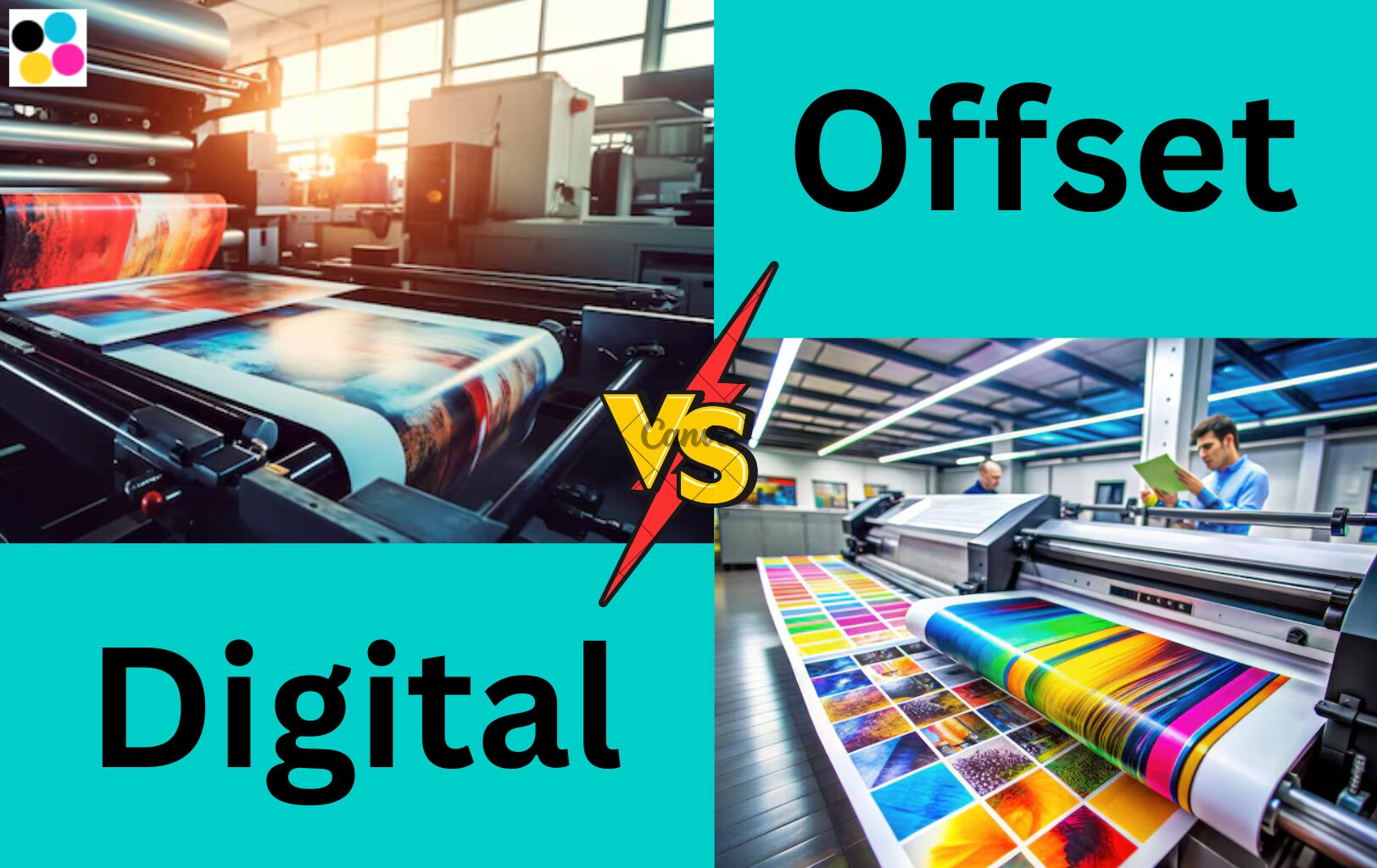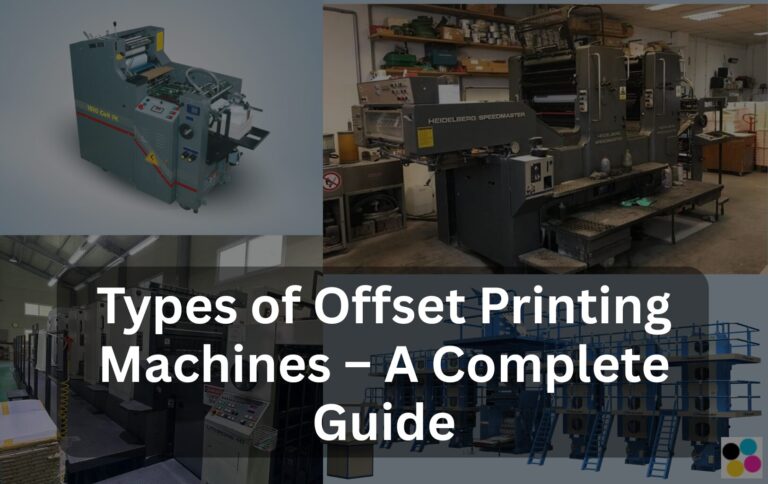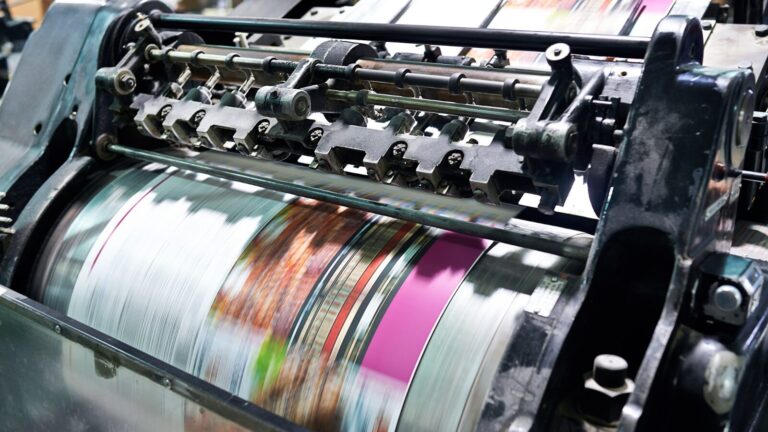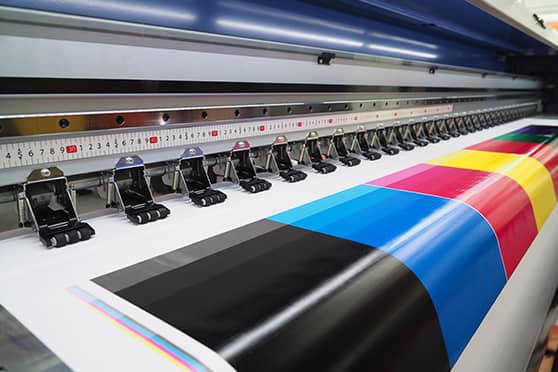If you’ve ever needed brochures, flyers, packaging, or business cards printed, you’ve likely come across two terms: offset printing and digital printing. These are the two main methods used in the commercial printing industry today. But what’s the difference between them? Which one is better for your needs?
In this article, we’ll break down offset printing vs digital printing in a way that’s easy to understand — even if you’re not from the printing industry. We’ll explore how each method works, their pros and cons, typical use cases, and cost comparisons to help you make the right decision.
What Is Offset Printing?
Offset printing, also called offset lithography, is a traditional printing method where images are transferred (or “offset”) from metal plates to rubber blankets, and then onto the paper. It’s the most commonly used technique for high-volume commercial print jobs.

Key Features of Offset Printing:
- Uses metal plates (usually aluminum)
- Ink is applied to the plate, then transferred to a rubber blanket, and finally to the paper
- Often used for high-quality, large-volume print runs
- Can print on various surfaces like paper, cardboard, plastic, and more
What Is Digital Printing?
Digital printing is a modern method that prints images directly onto the paper from digital files — no plates required. It’s similar to the way your desktop printer works, but on a much larger and more advanced scale.
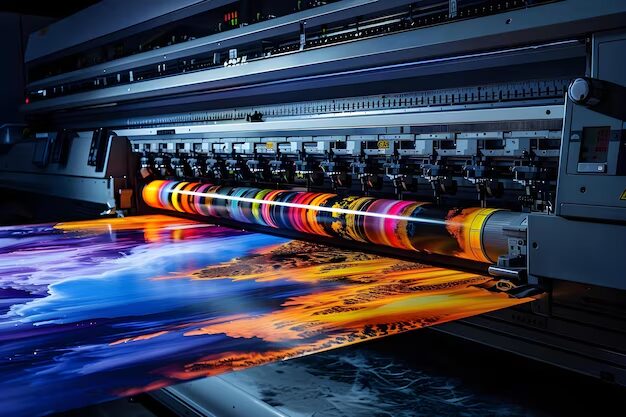
Key Features of Digital Printing:
- No printing plates are needed
- Images are sent directly from a computer to the printer
- Ideal for short runs, variable data printing (like names or addresses), and quick turnaround
- Works best on paper, though newer machines can print on specialty materials too
Comparing Offset and Digital Printing
Let’s break down the differences based on the most important factors you should consider.
1. Print Quality
- Offset Printing: Known for exceptional color accuracy, fine details, and consistent image quality. It’s the industry standard for sharp, vibrant prints.
- Digital Printing: Quality has improved a lot in recent years. Today’s digital presses offer great resolution and clarity, but may fall short in terms of color matching and consistency for some high-end jobs.
Verdict: Offset wins for high-end professional quality.
2. Cost Effectiveness
- Offset Printing: More expensive setup due to plate creation and longer preparation time. But per-unit cost decreases significantly with higher volumes.
- Digital Printing: Low setup cost, but per-unit cost stays the same regardless of quantity.
Verdict:
- Offset is more cost-effective for large print runs
- Digital is better for short runs or small batches
3. Turnaround Time
- Offset Printing: Takes longer to set up due to plate making and press setup. Drying time may also be required, especially for coated papers.
- Digital Printing: Fast and flexible. You can have your prints done in hours, sometimes even minutes.
Verdict: Digital printing is the clear winner for speed and urgent jobs.
4. Customization & Variable Data
- Offset Printing: Not ideal for personalization. You can’t change content (like names or addresses) between copies without stopping and resetting the machine.
- Digital Printing: Perfect for variable data printing — every page can be different. Great for personalized marketing materials like direct mail or certificates.
Verdict: Digital printing wins if you need customization.
5. Paper & Material Flexibility
- Offset Printing: Offers a wider range of paper types, finishes, and sizes. You can print on textured stock, thick card, plastics, and more.
- Digital Printing: More limited, although high-end digital presses now support a decent variety of materials.
Verdict: Offset printing is more versatile in terms of substrate choices.
6. Color Matching
- Offset Printing: Uses Pantone and CMYK inks for spot-on color accuracy — perfect for brand consistency.
- Digital Printing: Uses CMYK toner or ink. While accurate, it may not exactly match Pantone or special brand colors.
Verdict: Offset is better for exact color reproduction.
7. Environmental Impact
- Offset Printing: Generates more waste (plates, water, chemicals). However, modern offset presses are becoming more eco-friendly.
- Digital Printing: Generally more environmentally friendly due to reduced waste and chemical use.
Verdict: Digital has a greener footprint, especially for small jobs.
When to Choose Offset Printing
Go with offset printing if:
- You’re printing large quantities (e.g. 5,000+ flyers, 10,000+ brochures)
- You need precise color matching (Pantone, brand colors)
- You want to print on specialty paper or thicker stock
- You require top-tier print quality for packaging or marketing
When to Choose Digital Printing
Choose digital printing if:
- You only need a few copies (like 100 brochures or 50 booklets)
- You want personalized content (like names or QR codes)
- You’re in a time crunch and need fast delivery
- You want to test a design before committing to a large print run
Offset vs Digital Printing: Cost Comparison
| Quantity | Offset Printing | Digital Printing |
|---|---|---|
| 100 pieces | Expensive | Very affordable |
| 1,000 pieces | Moderate | Affordable |
| 10,000 pieces | Very economical | Expensive |
Note: These are general trends. Actual pricing depends on the design, paper, location, and printer used.
Final Verdict: Offset or Digital?
There’s no one-size-fits-all answer. Your decision depends on your project needs, budget, timeline, and quality expectations.
- Choose Offset Printing for: high-volume jobs, premium quality, color accuracy
- Choose Digital Printing for: short runs, personalization, speed, and flexibility
Many businesses use both methods depending on the type of print job. For example, a marketing agency might print brochures in bulk via offset printing machines and then print personalized mailers digitally.
Frequently Asked Questions (FAQs)
Q1. Is offset printing cheaper than digital?
Offset printing becomes cheaper per unit as the quantity increases. It’s ideal for bulk printing, while digital is cheaper for small quantities.
Q2. Which one is better for printing photos?
Offset printing gives better color depth and detail, but modern digital presses are very capable too, especially for standard photo prints.
Q3. Can I print on thick card using digital printing?
Yes, but with limitations. Offset is better for very thick or specialty papers.
Q4. Which one dries faster – offset or digital?
Digital printing dries instantly. Offset ink may need time to dry or require IR/UV drying depending on the setup.
Q5. Can I get metallic or spot UV effects with digital printing?
Some high-end digital presses support these, but offset printing still offers more finishing options.
In Summary
Offset printing is unbeatable for large runs and premium print quality, while digital printing is perfect for quick jobs and personalized content. Know your goals, understand your audience, and choose the right technology that delivers the results you need — within your budget and timeline.
If you’re unsure which method is best for your project, feel free to reach out — we can help you choose the most efficient and cost-effective solution for your printing needs or you can explore our used offset printing stocklist.

